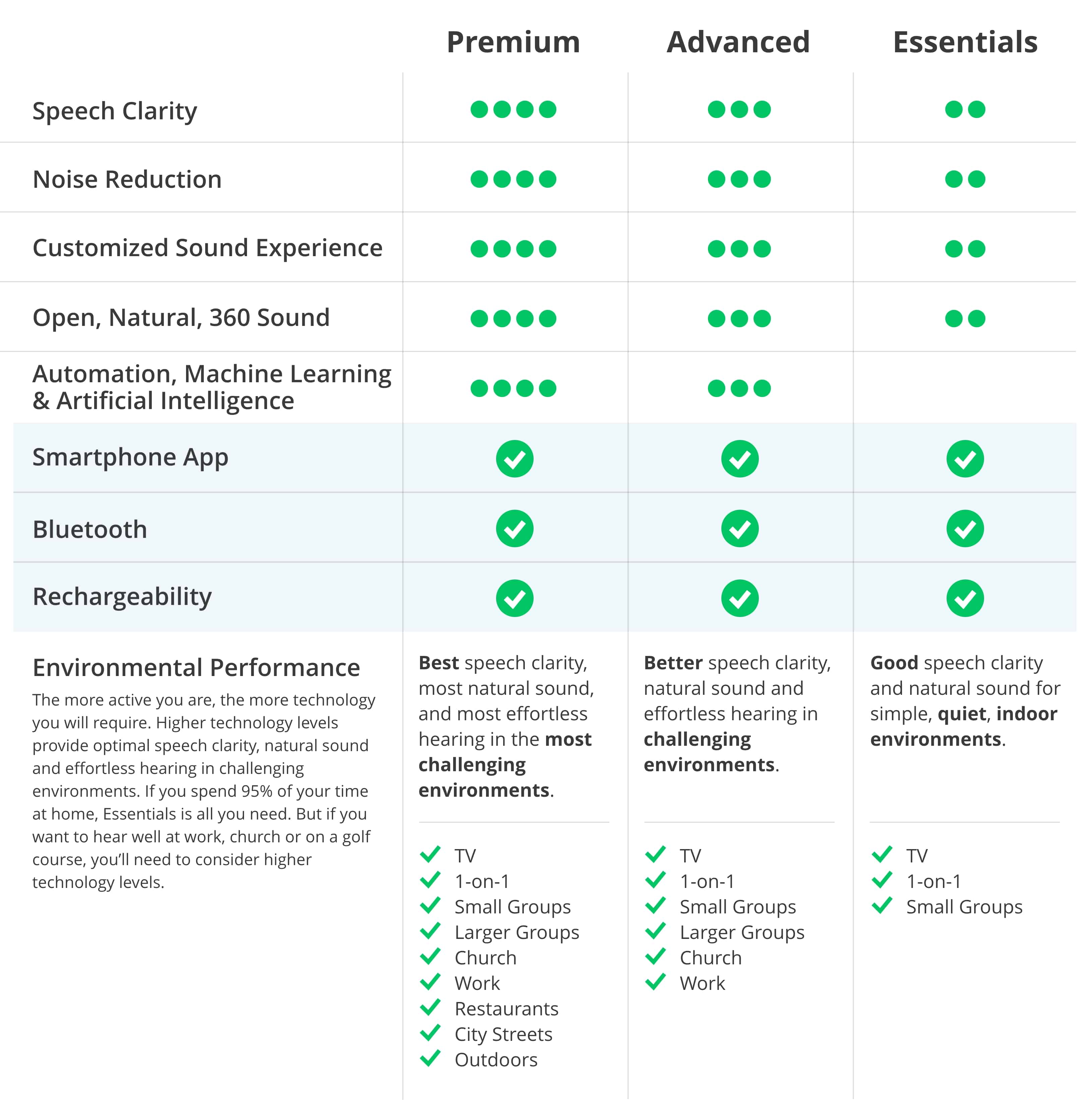4 Reasons Why People are Wearing Hearing Aids
Every day over 10,000 Americans get new hearing aids and that number is growing. Here are the top 4 reasons why....
Read more
Have you ever heard the saying, “it’s what’s on the inside that counts”? And when it comes to medical-grade hearing aids, this couldn’t be truer.
Hearing aid manufacturers offer several different styles (the outside) and levels of hearing aid technology (the inside). These devices have come a long way, especially in the past 5 years. Every hearing aid from the leading brands is more discreet and more effective than ever before.
On the outside, it’s easy to see that hearing aids come in many different shapes and styles. The two main categories of hearing aids are “in-the-ear” and “behind-the-ear”. Determining the appropriate style often depends on the severity of your hearing loss and the anatomy of your ear. Although some people really want “in-the-ear” devices, they aren’t always a viable solution. The size or shape of the ear canal might not be big enough for an in-the-ear device. The good news is that many “behind-the-ear” devices are now smaller, sleeker and practically invisible. They’re often rechargeable and come with additional features like Bluetooth, which actually makes them a more attractive option.
Just look at all the people wearing Apple AirPods® or other Bluetooth wearables these days. Although a discreet style is always a consideration, we’ve found that determining the appropriate level of technology and functionality are the most important factors in long-term success.
To start our explanation of hearing aid technology, let’s begin with the example of computers. Although two computers may look the same on the outside, they can be very different on the inside. But the best computer for you is the one that meets your needs.
At hear.com, we classify every hearing aid into one of the technology levels below. We base these classifications on how you will be using hearing aids. Here are some general rules:

For budget-conscious customers, we do have an Economy option. These devices have basic speech clarity and natural sound for the simplest, quietest environments. These basic medical-grade hearing aids outperform all generic amplifiers or outdated technology. The Economy line of hearing aids ranges from $59-$109 per month*.
Now that you have all this information, our recommendation is always “to get as much technology as you can afford.” From all our interactions with customers, advanced programs and added conveniences will greatly increase your chances of hearing success. Speech will be clearer, the sound will be more natural and your life will be easier… even in more challenging environments. The best technology really does makes a difference. If you haven’t already signed up for our 45-day trial, click the button below to experience it for yourself.
Related Articles
Every day over 10,000 Americans get new hearing aids and that number is growing. Here are the top 4 reasons why....
Read more
Adjusting to your new hearing aids is a process and it’s important to take it slow...
Read more
You should explore the different types available and determine whether improving your hearing is worth the cost....
Read more

Take our free 2-minute question-based hearing test!
It will help you make an informed decision on treating your hearing loss.